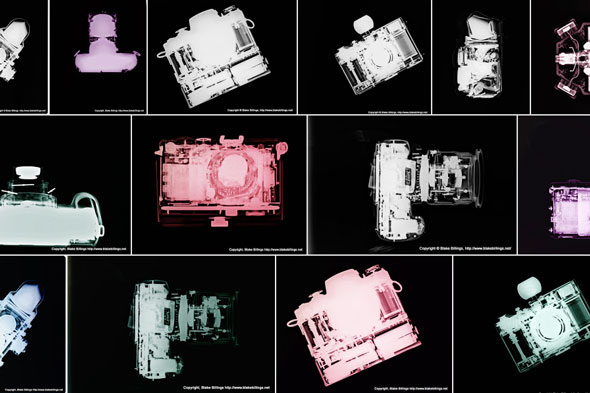Right, as a film shooter back in the day, who wouldn’t be wary of airport X-ray scanners. It often took a great deal of effort to convince staff that under no circumstances I’ll let my precious rolls of film through that machine. That was in the days when we were served metal cutlery in planes and you’d carry a bottle of water in your bag and no one bothered. So with a few exceptions my film rolls were granted leniency and only passed through metal scanners. Still, about to board a plane I never like to see my cameras disappear into that machine even though there is nothing to worry about. Or is it? Fogged film was something to worry about. What about a fogged sensor?
The damage to films is history now, or so the X-ray machines manufacturers claim — at least up to ISO 800 you’re supposed to be fine. Above that a hand inspection is explicitly permitted by law. A hand inspection of lower speed film rolls is recommended only when the film has already been subjected to five trips through X-ray scanners.

So what about digital cameras? You might remember fear-mongering Kodak back in 2011 warning every time you take a digital camera on an airplane you’ll kill photosites on that camera (that’s why the big digital camera manufacturers ship their goodies by boat!). It’s gamma rays in that altitude, Kodak claimed. You’d need an immense amount of concrete to shield yourself…
Obviously it was a desperate attempt to lure people back to film. In fact there is nothing to worry about. Just make sure that your camera is off. You’d probably get a completely saturated sensor from sending your camera through a scanner in a long exposure. So that’s a big no.
The only damage that can occur to your camera is to the memory card, namely by magnets or electromagnetism. Airports use this to check the metal on person when you pass through the special “doors” or sometimes with handheld metal detectors. Don’t have memory cards on you. There’s science to back this up.
Still, you might fear that repeated exposure to X-ray machines might affect the sensor in any way, and be it absolutely negligible. Or is a digital imager completely resistant to X-rays? To avoid the magnets, it’s actually much safer to let the camera go through X-rays.
But listen to NASA. Due to damage to the sensor from gamma rays, NASA doesn’t send a digital camera twice into space (well maybe they do now under budget constraints…). Here is some background on how cosmic rays damage camera sensors in space. The most prolific astronaut photographer, Don Pettit, described the rays’ effects on ISS equipment on his blog:
Free from the protection offered by the atmosphere, cosmic rays bombard us within Space Station, penetrating the hull almost as if it was not there. They zap everything inside, causing such mischief as locking up our laptop computers and knocking pixels out of whack in our cameras. The computers recover with a reboot; the cameras suffer permanent damage. After about a year, the images they produce look like they are covered with electronic snow. Cosmic rays contribute most of the radiation dose received by Space Station crews. We have defined lifetime limits, after which you fly a desk for the rest of your career. No one has reached that dose level yet.
Obviously there is some effect of X-rays on digital camera sensors, however small and deniable that effect is. It’s probably not even measurable. You’d need your camera to pass an X-ray scanner several times a day during the course of several years and be airborne around the clock to damage an imager’s photosites a.k.a. get damaged/dead pixels.
But be worried about things in your checked luggage. There they don’t always use the latest technology and if they can’t see through something they just pump the power up. All your digital gear, computers, cards, drives etc. should be in hand luggage.


